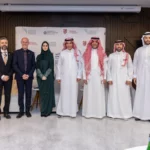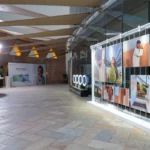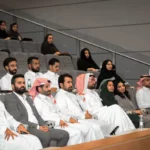
Sensor technology research by AUS faculty envisions a safer and healthier tomorrow

Sharjah, UAE. October 10, 2023 – Two American University of Sharjah’s (AUS) researchers have developed miniature sensors able to detect environmental pollutants and viruses—an innovation that could revolutionize multiple industries and improve the quality of life for many.
Working in collaboration with the University of Waterloo in Canada, AUS faculty members Dr. Rana Sabouni, Associate Professor in Chemical Engineering, and Dr. Mehdi Ghommem, Associate Professor in Mechanical Engineering and Dana Gas Endowed Chair in Engineering, combined two technologies in their research. These are sustainable synthesis methods for nanomaterials, which is the eco-friendly and sustainable production of nanoparticles without the use of hazardous chemicals or toxic solvents, and micro-electromechanical systems (MEMS) technology, a process technology used to create tiny integrated devices or systems that combine mechanical and electrical components.
“We’re working on two important sensing projects. In the first one, we’re developing a gas sensor to quickly detect CO2 leaks in workplaces where there could be safety risks. In the second one, we’re creating portable devices that can rapidly detect viruses, like COVID-19, without the need for bulky lab equipment,” said Dr. Ghommem.
He noted that the sensor’s small size offers distinct advantages. “This type of sensor can be integrated with electronics and implemented in confined spaces, and it can be self-powered given the associated low power requirements,” he said.
Dr. Sabouni said: “Gas/chemical MEMS sensors can play a pivotal role in environmental monitoring by detecting and quantifying pollutants in the air and water. This information is crucial for addressing environmental issues and ensuring compliance with regulations and safety measures. The same goes for MEMS biosensors, which can be employed to cover healthcare related applications in the early detection of viruses during the absence of advanced laboratory facilities to assist doctors in making the right diagnosis.”
The research findings have been published in various peer-reviewed journal papers, have secured external and internal research grants and fed into the research work of AUS graduate students from different master’s programs.
As for the future of their research, Dr. Ghommem explained: “While we have made significant strides in MEMS sensors, coated with metal organic framework, there is still room for improvement in enhancing sensitivity and expanding the sensing range. We are currently exploring the functionality of electrostatic MEMS sensors in aqueous solutions, a promising avenue for expanding our mass-sensitive detection approach for chemical pollutants. Additionally, we plan to broaden our research into biosensing by targeting the detection of specific biomolecules. Our next steps involve moving from small-scale prototypes to assessing their technology readiness level and commercial feasibility.”
Dr. Sabouni added: “Our mission is to utilize nano and microscale structures and systems to develop innovative, fast and reliable detection mechanisms that contribute to a better quality of life and a safer working environment.”
The AUS College of Engineering’s faculty members and researchers stand as beacons of innovation and progress. Their collective commitment to cutting-edge research and collaborative efforts has consistently yielded transformative outcomes. Armed with a deep-rooted passion for advancing knowledge and technology, these visionary minds continuously push the boundaries of what is possible.
For more information on the AUS College of Engineering, visit www.aus.edu/cen.















































